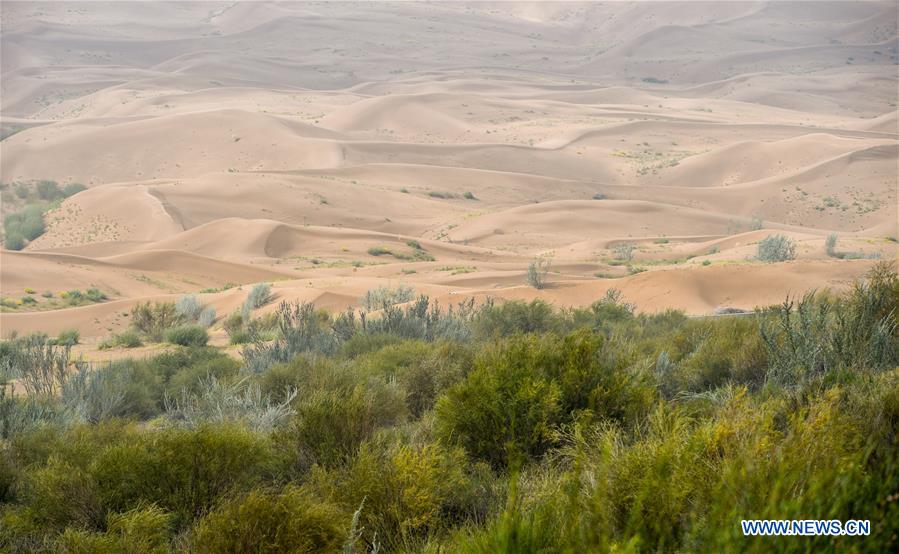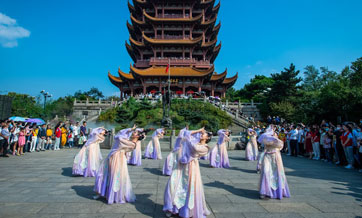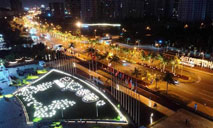Kubuqi: an oasis that has arisen miraculously from a desert
A massive greening project was recently staged in the Kubuqi Desert, Hanggin Banner, Ordos, north China's Inner Mongolia Autonomous Region, attracting over 1,000 participants.

Photo taken on Sept. 14, 2020 shows a sand-fixing forest in Dalad Banner of Ordos of north China's Inner Mongolia Autonomous Region. (Xinhua/Lian Zhen)
"Through decades of afforestation, the meadows, which were on the verge of disappearing, have made a noticeable recovery," said a local resident from the Mongolian ethnic group named Mengke Dalai.
"By raising cattle and sheep and running a desert tourism business, my family is embracing an increasingly better life," he said.
The desert-turned oasis has come into being as a direct result of the ceaseless greening efforts made by thousands of local farmers and herdsmen just like Mengke.
Over the past 30 years, more than 6,000 square kilometers of desert has been greened, with 53 percent of the Kubuqi Desert now covered by vegetation at present. According to recent reports, 15.4 million tonnes of carbon were removed from the atmosphere and over 500 billion yuan ($77.6 billion) in wealth was created as a result of these ecologically-minded efforts.
Currently, desertification is threatening the livelihoods of more than 2 billion people in 167 countries and regions around the world.
In a congratulation letter sent to the seventh Kubuqi International Desert Forum on July 27, 2019, Chinese President Xi Jinping said China has placed great emphasis on building an ecological civilization and made great headway in the prevention and control of desertification. Containing desertification in the Kubuqi Desert offers China's experience in environmental treatment as well as achieving the 2030 Agenda goals, he said.
"We were surrounded by sand when I was a child. Our houses were almost buried in sand sometimes," said Gao Eryun, a villager from Erdos' Dalad Banner.
According to the man, his village has now planted nearly 13,000 hectares of salix cheilophila, a native shrub species, which has not only improved the local ecological environment, but has also expanded villagers' incomes. His family earned more than 200,000 yuan last year by planting corn crops and raising sheep, as well as engaging in the salix cheilophila business, he said.
"Upholding the philosophy that lucid waters and lush mountains are invaluable assets, we have advanced the comprehensive management of mountains, waters, forests, farmlands, lakes, grasslands and deserts," said Wang Yuqiang, mayor of the Hanggin Banner, adding that the Kubuqi Desert has finally achieved a double success in both afforestation and poverty alleviation.
Tu Ruihe, a representative of the United Nations Environment Programme to China, suggested that the innovative measures adopted for desertification control in the Kubuqi Desert have set an example for other countries and regions also facing adverse impacts from desertification.
"The development of photovoltaic and wind power energy resources that reduce carbon emissions, efforts in afforestation and ecological restoration that improve carbon sinks, science-based management that enhances the carbon sink capacity of dry land, and the acquisition of economic benefits through carbon trading will all make a contribution to China's goal of peaking its carbon dioxide emissions and achieving carbon neutrality, as well as counteracting the effects of global climate change," Tu said.
Photos
Related Stories
Copyright © 2021 People's Daily Online. All Rights Reserved.










